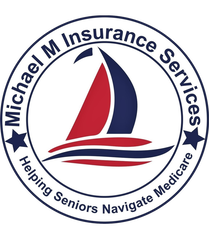Medicare is a federal health insurance program that serves as a lifeline for millions of Americans, particularly those aged 65 and older, as well as younger individuals with certain disabilities or conditions like End-Stage Renal Disease (ESRD) or ALS. Navigating Medicare can feel overwhelming, but understanding its core components is essential for seniors to make informed healthcare decisions. At My Medicare Mike, we’re committed to simplifying this process. This article breaks down the basics of Medicare, including its parts, eligibility, enrollment, and key considerations, with guidance to help you maximize your benefits.
What Is Medicare?
Medicare, established in 1965, is a government-run health insurance program designed to provide affordable healthcare to seniors and eligible individuals. It covers a range of services, from hospital stays to doctor visits, but it’s not a one-size-fits-all solution. Medicare is divided into four main parts—Part A, Part B, Part C, and Part D—each addressing different healthcare needs. Additionally, supplemental options like Medigap plans help cover costs that Medicare doesn’t. To learn more about how Medicare fits into your healthcare journey, visit our About Us page.
Who Is Eligible for Medicare?
Medicare is primarily for individuals aged 65 or older who are U.S. citizens or legal residents with at least five years of residency. You may also qualify if you’re under 65 and have a qualifying disability, ESRD, or ALS. If you’re receiving Social Security benefits before turning 65, you’re automatically enrolled in Parts A and B. Otherwise, you’ll need to sign up. Our Contact Us page connects you with experts to clarify eligibility questions.
When and How to Enroll
The Initial Enrollment Period (IEP) is a seven-month window that begins three months before your 65th birthday and ends three months after. Missing this period can result in penalties, especially for Part B and Part D. If you’re still working and have employer-based insurance, you may qualify for a Special Enrollment Period (SEP) to sign up later without penalties. For step-by-step enrollment tips, visit our FAQ: How do I sign up for Medicare?.
Key Considerations for Seniors
Costs: Medicare isn’t free. You’ll encounter premiums (Part B and D), deductibles, and copayments. Low-income seniors may qualify for cost-saving programs like Extra Help for Part D. Learn more on our Services page.
Original Medicare vs. Medicare Advantage: Original Medicare offers flexibility to see any provider accepting Medicare, while Medicare Advantage may limit networks but offer extra benefits. Our Blog compares these options in depth.
Provider Networks: With Original Medicare, you can visit any Medicare-certified provider nationwide. Medicare Advantage plans often restrict you to in-network providers, so confirm your doctors are included.
Prescription Drugs: If you opt for Original Medicare, consider a standalone Part D plan. Medicare Advantage plans often bundle Part D coverage.
Open Enrollment: From October 15 to December 7 each year, you can switch plans or join a Medicare Advantage or Part D plan.
Why Choose My Medicare Mike?
At My Medicare Mike, we simplify Medicare with personalized guidance. Whether you’re new to Medicare or reassessing your plan, our resources and expert advice ensure you make confident decisions. Explore our FAQs for answers to common questions or reach out via our Contact Us page for tailored support.
Understanding Medicare is the first step to securing the healthcare coverage you need as a senior. By grasping the roles of Parts A, B, C, D, and Medigap, and knowing when and how to enroll, you can avoid costly mistakes and optimize your benefits. Stay informed with our Blog and let My Medicare Mike guide you through every step of your Medicare journey.

